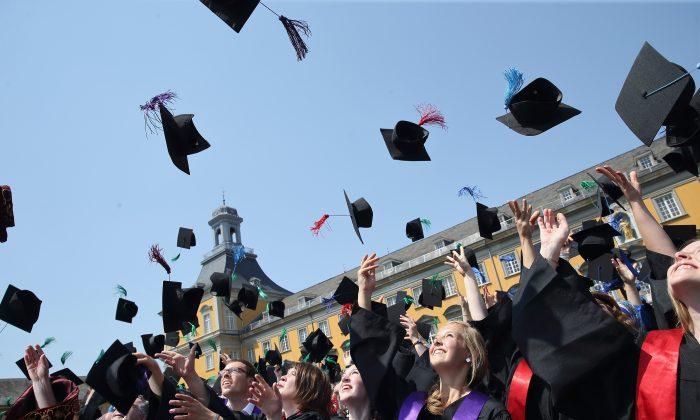Higher education is seen by some as a passport to social mobility, a leveller which can help young people from disadvantaged backgrounds catch up with their more fortunate peers by offering them a springboard from which to enter the world of employment.
But repeated studies have told us that students from poorer families, boys and some ethnic groups are less likely to participate in higher education than other groups – and even less likely to attend the most prestigious institutions.
One way of widening participation in higher education is through the use of contextual admissions policies. This involves taking into account the socioeconomic context of students’ academic achievements when deciding which university applicants to shortlist, interview, make standard or reduced offers to, or accept at confirmation or clearing.
The idea behind the use of contextual data in university admissions is, as the 2004 Schwartz Report on fair admissions put it, that: “it is fair and appropriate to consider contextual factors as well as formal educational achievement, given the variation in learners’ opportunities and circumstances”.
Some have argued that type of school attended should be a factor in university admissions decisions and have called for state school students to be admitted with lower grades than their privately educated peers. But how appropriate is the type of school a student attended as a contextual factor?
State School Students Do Better at University
Research on degree outcomes published recently by the Higher Education Funding Council for England (HEFCE) found that state school students do better, on average, at degree level than their privately educated peers.
In 2013-14, 82% of state school graduates achieved a first or upper second-class degree compared to 73% of graduates from private schools. This nine percentage point gap was found to decline to four percentage points after differences in grades on entry to university were taken into account. The gap was narrower for those with very high grades on entry, at about one percentage point for those who enter with AAAA at A-level.
The Higher Education Funding Council for England (HEFCE) reported very similar findings last year and some 12 years ago. Studies carried out at the universities of Bristol, St Andrew’s and Oxford reported similar results, although a Cambridge study found no link between school type and degree performance.
What causes this difference? It is often said that state schools are less well-resourced – at least compared to the well-known private schools. As a result, the reasoning goes, able students at state schools are less likely to achieve grades that do full justice to their ability while private schools are better placed to help even lower-ability students achieve high grades. However, the truth is that we do not know.
Either way the gap in degree performance between students from different types of school has been used as evidence to support the case for contextualised admissions as a means of making university access fairer and widening participation. But would it be fairer to base contextualised admissions policies on school type – and would it help to widen participation?
It Depends on the School
It is questionable whether attending a state school rather than a private school counts as being contextually disadvantaged for all state school students. The differences are only “on average”. Many state schools serve students from highly privileged backgrounds whose family resources are similar to their privately educated peers – and these schools often achieve results as good as or better than many private schools. It would probably be these relatively advantaged state school students who would benefit first and foremost from a contextualised admissions policy based on school type. Far more so than state school students from working class families and comparatively deprived communities.
The HEFCE study also compared students from neighbourhoods with higher education participation rates in the bottom and top 20% nationally and found that those from the bottom 20% are about three percentage points less likely to receive a first or upper second class degree on average after taking into account grades on entry. Similarly HEFCE’s study published last year and other research found coming from a more deprived neighbourhood to be associated with poorer performance at degree level.
All of this suggests that it may not be the most socioeconomically disadvantaged section of the state school population that is driving the slightly superior average performance of state school pupils at degree level, but rather the socioeconomically advantaged section of the state school population.
What Does This Mean?
A lot of the above needs further research and analysis. But our current conclusion would be that coming from a state school, by itself, is not a good enough reason to say a student is likely to have more potential to succeed in higher education and so should be prioritised for access to university. We are much more likely to correctly identify students from disadvantaged contexts if we consider indicators of their individual circumstances and neighbourhood characteristics as well.
It also becomes clear that success in higher education should not be the justification for bringing in a policy of contextualised admissions. This is because socioeconomically disadvantaged students may underachieve relative to their potential in higher education as well as earlier in their school careers, precisely because they continue to be socioeconomically disadvantaged.
Therefore applicants should not be given priority merely because they are from state schools – this would not solve anything and there must be better ways to ensure that access to universities is fair for everyone.![]()
Vikki Boliver, Senior Lecturer in Sociology and Social Policy, School of Applied Social Sciences, Durham University and Stephen Gorard, Professor of Education and Public Policy, Durham University
This article was originally published on The Conversation. Read the original article.

Friends Read Free